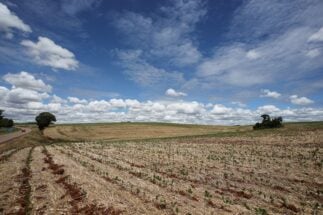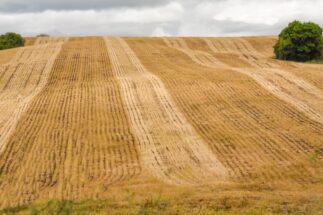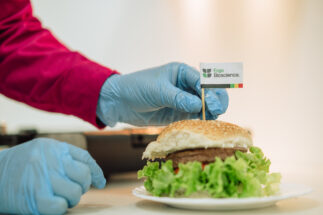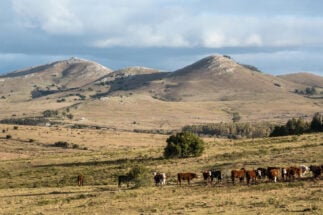In 2016, a group of researchers demonstrated the genetic relationship between today’s maize and teosinte grasses cultivated by ancient Meso-american peoples. The evolution of the cereal over fiver millennia under human selection is often used to explain the origins of biotechnology – the discipline of genetic modification that, in its modern guise, began in the 1970s, and is now celebrated for its potential to improve productivity in different activities, including agriculture.
The Organisation for Economic Co-operation and Development (OECD) defines biotechnology as: “The application of science and technology to living organisms, as well as parts, products and models thereof, to alter living or non-living materials for the production of knowledge, goods and services.” The introduction of transgenic crops, or genetically modified (GM) crops as they are popularly known, is perhaps the best known application of such an approach. GM crops’ advancement accelerated in the 1990s but, in the decades since, they have never been too far from controversy. Environmentalists routinely resist and scrutinise them.
The analysis in 2016 by the team from the Centre for GeoGenetics in Copenhagen involved a genome sequencing of a 5,310-year-old maize cob, which had been excavated in Mexico’s Tehuacan Valley. Without knowing it, humanity was taking the first steps of what is now known as “classical biotechnology”, by crossing and selecting the best species for their desirable characteristics. The publication of the famous double helix DNA structure in 1953 represented a major milestone in the discipline’s evolution, enabling genetic engineering and molecular biology.
1996
The year Argentina authorised the first genetically modified glyphosate-resistant soy crop. Since then, the planted area of soy has grown from 6 million to around 16 million hectares
The potential applications for biotechnology span medicine, industry, the environment and beyond. In the context of agricultural activity, biotechnology can be understood more specifically as “the use of living organisms that are of agronomic interest to improve a characteristic of a plant, either the commercial characteristics of these products, such as resistance to a herbicide, or to increase yields,” according to Pablo Armas, biotechnology researcher at Argentina’s National University of Rosario.
Argentina, one of the world’s leading producers of grains, oils and their by-products, is among the countries that have intensively genetically engineered their crops.
In 2019, the International Service for the Acquisition of Agri-Biotech Applications (ISAAA) ranked it third globally in terms of area planted with biotech crops.
The two most widespread GM crops in Argentina are soybean and maize. “The characteristics that have been incorporated are tolerance to herbicides, resistance to insects, or both characteristics in the same plant,” says a document published by the Ministry of Agriculture, Livestock and Fisheries, which notes that these products are exported to dozens of destinations, including the European Union, China, India, the Middle East and wider Latin America.
Argentina authorised its first transgenic crop for commercial use in February 1996 – a soy crop resistant to the herbicide glyphosate. At that time, around 6 million hectares were planted with this oilseed. Two and a half decades later, the figure has almost tripled, to an annual average of 16 million hectares. Similarly remarkable growth has been seen with maize. Its 9.7 million hectares of planted area in 2020 is double that of 2010.
A disruptive technology
Drought has hit the economies of South America and has ruinous consequences for agricultural production. A possible solution to such losses – which are occurring more frequently due to the impact of climate change – could be on the horizon, thanks to one of the most resounding discoveries of Argentine biotechnology, “HB4” gene technology.
HB4 technology is the brainchild of Raquel Chan, a pioneering Argentine biochemist and member of the state scientific system (CONICET), whose creation earned her recognition from the Inter-American Institute for Cooperation on Agriculture (IICA). HB4 isolates a particular sunflower gene that is then grafted onto soy, maize or wheat, improving their capacity to tolerate droughts and maintaining – even increasing – their productivity.
“Biotechnology techniques enable just such innovations, which would be impossible to achieve with traditional methods,” explained Claudio Dunan, the Chief Strategy Officer of Bioceres, the firm in charge of patenting the technology. “We have achieved crops that are tolerant to water stress, a type of condition that is recurring with increasing frequency due to the volatility of rainfall.”
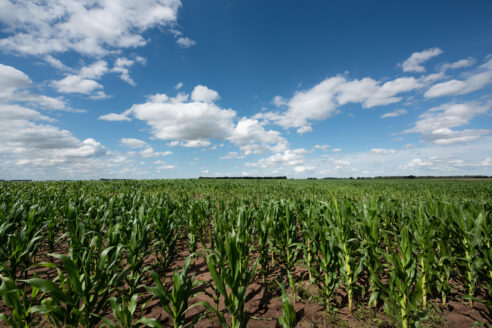
With regulatory approval currently in the pipeline, HB4’s widespread use would be a milestone for Argentina. It is an entirely national innovation and the result of a partnership between a public laboratory and Bioceres, a private company. Until now, the vast majority of the GM technologies applied have been imported and the change would be unprecedented, according to Marina Baima, secretary of Science, Technology and Innovation for the province of Santa Fe.
Baima believes that Argentina and especially Santa Fe, whose river ports process 40% of the value of national exports, have the elements in place to become potential global leaders in biotechnology.
“With 200 firms, we are 16th in the ranking of countries with the most companies in the sector. This, for an emerging country, indicates that we have the conditions to develop technologies on a global scale,” Baima said, referring to OECD figures that show the country is fifth in terms of patents granted to biotechnology over all patents in general.
Biotechnology and agrochemicals
Not everyone welcomes the evolution of biotechnology, however. The prospective regulation of HB4 technology brought what is now a well-run debate back to the fore last year, as environmental organisations warned about the possible consequences of its implementation.
Their criticisms are broadly similar to those of 66 other GMOs approved to date in Argentina. They argue that such innovations end up having harmful effects on health – a direct consequence of the increased use of chemical phytosanitary products to prevent diseases and losses – as well as potentially adverse effects on other plant life.
“Since 1996, the use of pesticides has increased by 1,500%,” said Marcos Filardi, a member of the Network of Lawyers for Food Sovereignty (REDASA). “The impact of this increase can be seen mainly in the rural villages that have been fumigated, where there has been an increase in neurodegenerative diseases, fertility disorders and respiratory illnesses.”
These criticisms have been echoed in some research, received media attention and even inspired popular works of fiction. Yet, the prevalence of such problems is still low according to other academic research. The lack of funding available for such investigation prevents reaching a categorical conclusion, but there is strong evidence that, as a result of the lack of state control, the technologies are used irresponsibly.
“The misuse of biotechnology is what has given it its bad reputation,” admitted Pablo Armas, partly agreeing with Filardi, who said the biotech model “didn’t work.” According to Armas, biotechnology has generated greater resistance from weeds, which has forced a gradual increase in the amount of phytosanitary products used.
The industry itself is working to address this problem. Bioheuris is another Argentine company that has won international awards, in its case for developing a technology that improves weed management to reduce the environmental impact of herbicides. “If you apply the same product, resistance will appear at some point. So what we do is optimise plant genes to use safer herbicides,” said Carlos Pérez, one of its founders.
The products that Pérez and his team are developing will be available in four to five years. The long process from research to market partly explains why few organisations are able to fund such developments, which are ultimately evaluated by official bodies. Environmentalists have also criticised this process and official watchdogs have echoed their complaints.
“Our position is that all developments have been conceived from a business logic, which ignores the multiple realities of producers and the environment,” said Agustín Suárez, a member of the Unión de Trabajadores de la Tierra, which, like some Argentine municipalities, promotes agroecology and uses biological alternatives to pesticides.
The organisation currently produces on around 1,000 hectares, a marginal quantity given the national total but, according to Suárez, a demonstration of an interesting possible alternative.

